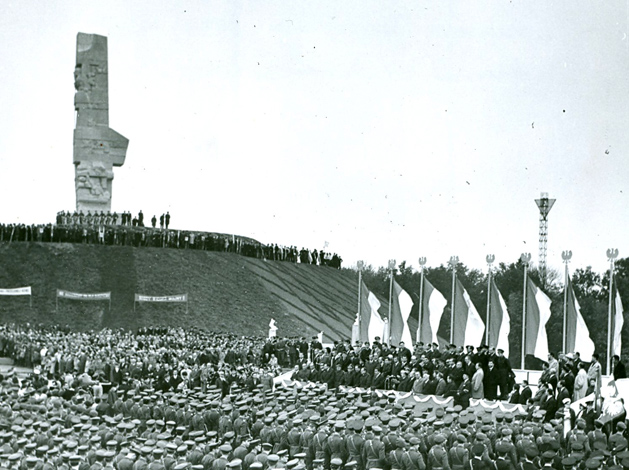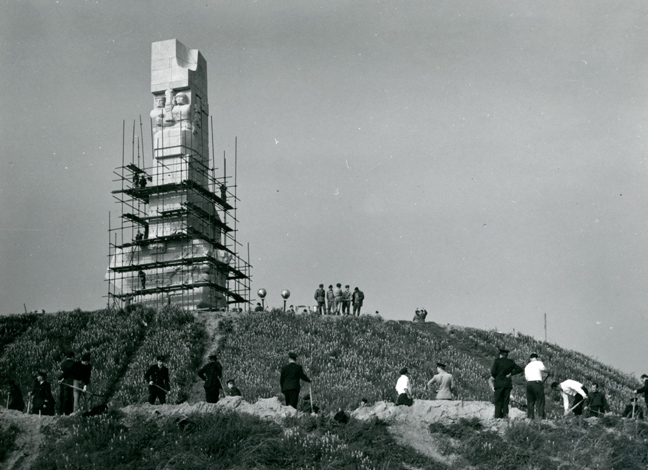- Monument/Memorial
- DK91 1, 80-542 Gdańsk, Pologne
In 1966 a 25-metre high monument was erected on the Westerplatte peninsula. The Communists used it mainly as a propaganda instrument. Not until many years later the monument became an important place of remembrance for the Battle of Westerplatte and the beginning of the Second World War in Europe.
The heroic defence of the Military Transit Depot on Westerplatte was a remarkable event in the history of Poland. The communist leaders after the War however considered this confrontation as a struggle from ‘bourgeois’ Poland and tried to ignore and repress it. Their attitude changed somewhat with the end to Stalinism in 1956. In order to win society’s acceptance, the Communists eagerly appealed to national traditions and symbols. In 1966, a 25-metre high monument was erected on Westerplatte.
The memorial however was not dedicated to the defenders of the Westerplatte, but to the defenders of the coast in general. The Communists thus tried to avoid too much support for Polish patriotic tendencies. At the memorial one can see the names of Murmansk, the Atlantic Coast, The English Channel and the Mediterranean.
The construction of a boulevard leading towards the memorial destroyed a part of the still existing barracks. Historical values were subordinate to propaganda: the Communist authorities used the monument as a showpiece. Delegations from around the world were invited to visit, and military ceremonies and official rallies were held here. In 1987 pope John Paul II visited Westerplatte. Today the memorial is still one of the most popular places for historical and touristic visits.


